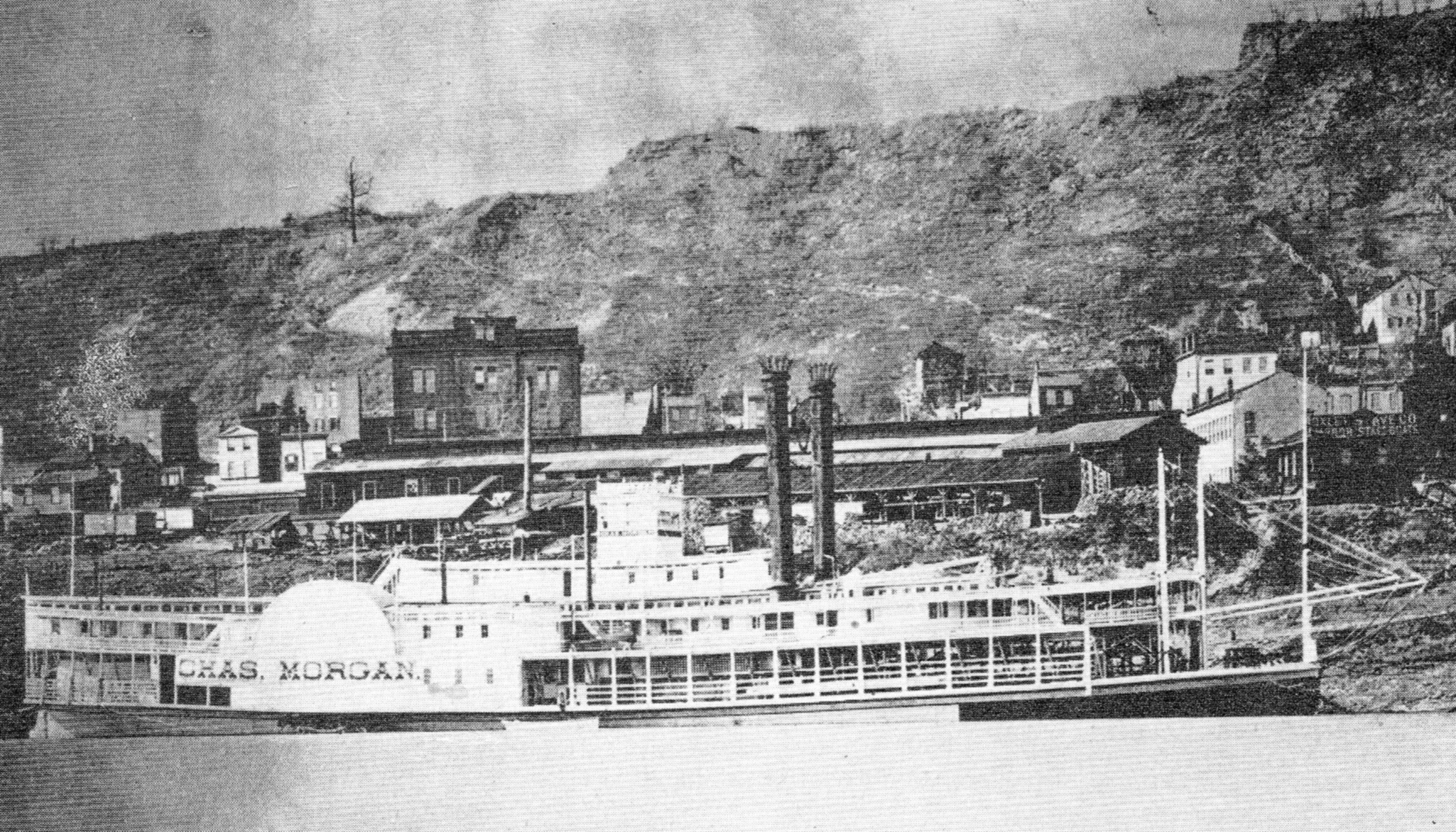The sidewheeler Charles Morgan was reputedly one of the most popular packets ever to ply the Cincinnati–New Orleans trade.
Built in 1874 by the Cincinnati Marine Railway & Dock Company, the wooden hull measured 302.2 feet in length by 43.4 feet in width. The engines were recycled from the John Kilgour, but were replaced with new ones (28-inch cylinders with 8-foot stroke) in 1877. Six boilers supplied the steam.
The boat was named for the steamship and railroad tycoon; Morgan made a personal visit to his namesake at New Orleans in 1875. The side paddlewheel boxes contained Morgan Line emblems, a star with the initials CM woven through.
Capt. Albert Stein was master and was widely known for being a cautious navigator who seldom, if ever, went to bed on the boat’s downstream trip; he reportedly slept in the barber’s chair, in full uniform.
The maiden trip of the vessel to New Orleans began at Cincinnati on December 12, 1874. By January 31, 1878, the riverboat had completed a total of 38 round trips to the Crescent City with freight and passenger receipts amounting to $100,874.49. The largest round-trip receipts for that period totaled $6,248.40 for a single trip; the smallest, $1,443.50. During the season of 1874–75, during its regular trade, the riverboat carried 2,763 cabin and 3,164 deck passengers in the course of 11 round trips.
On February 1, 1877, near Barfield Point on the Mississippi River, the Morgan collided with the steamer Aggie, which was piloted by a man with a “special” license as master and pilot. The license was revoked and the owner of the Aggie was fined $100 for neglecting to employ a regularly licensed pilot. On December 1, 1878, the Morgan collided with the packet Cotton Valley near Donaldsonville, La. The Cotton Valley sank with the loss of three lives and the licenses of the master and mate of that vessel were revoked.
When the racer Natchez was dismantled at Cincinnati in 1879, some of its equipment was transferred to the Morgan, including chandeliers, stained glass doors and the forecastle signboards.
Noted for being a fast boat, the Morgan made the run in June 1877 from New Orleans to Cincinnati in six days, 11 hours, racing the packet Robert Mitchell. A total of 42 landings were made during the trip, including a delay of 3.5 hours which was encountered at the Louisville & Portland Canal.
On April 24, 1880, the Morgan and the palatial packet John W. Cannon departed New Orleans together. While running abreast at the foot of St. Mary’s Street, the Morgan veered into the Cannon, sheering off its starboard paddlewheel, with the shaft falling into the river; the Morgan then towed the disabled Cannon to Gretna for repairs.
The Anchor Line chartered the boat in 1885 for a round trip from St. Louis to New Orleans for the Cotton Exposition, under the command of Capt. James O’Neal. By that time, the steamboat was owned by C.C. Carroll of the marine insurance firm of Carroll & Powell.
The Charles Morgan was destroyed by fire while laid up at the foot of Niagara Street in Cincinnati on December 4, 1886.



